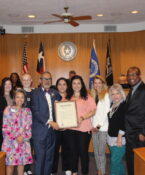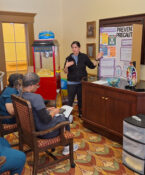A wider window for treating stroke
When someone has a stroke, there’s a very narrow window – three hours or less –when the drug tPA can be used to dissolve blood clots and restore blood flow.
But few people benefit from this treatment because they don’t get care fast enough, said Shaohua Yang, PhD, MD, Professor of Pharmacology and Neuroscience.
By widening this window, it may be possible to prevent the long-term consequences of a stroke.
“Damage to the brain from a stroke can trigger long-term memory loss and dementia downstream,” he said.
A $103,000 grant from the American Heart Association is not only helping Dr. Yang better understand how to prevent the consequences of stroke, it also is raising UNT Health Science Center’s profile as a leader in stroke research.
Despite the highly competitive environment that exists in grant funding, stroke research has expanded at UNTHSC. Over the last two years, the American Heart Association has awarded four grants to young scientists in Pharmacology and Neuroscience.
Over the last decade, research has led to improvements in the survival rate for stroke patients. Once the second-leading cause of death in the United States, stroke now ranks fifth. But there’s been little improvement in long-term outcomes.
“We can treat the acute stroke, but the long-term consequences are much more severe, and we don’t have much to offer patients,” Dr. Yang said.
More than 800,000 patients suffer a stroke annually. Between 25 percent and 30 percent of stroke survivors develop dementia, often within the first year of recovery. Having a stroke doubles the risk of developing dementia.
Expanding the treatment window might be one way to prevent or slow dementia and improve the quality of life for patients, Dr. Yang said.






Social media